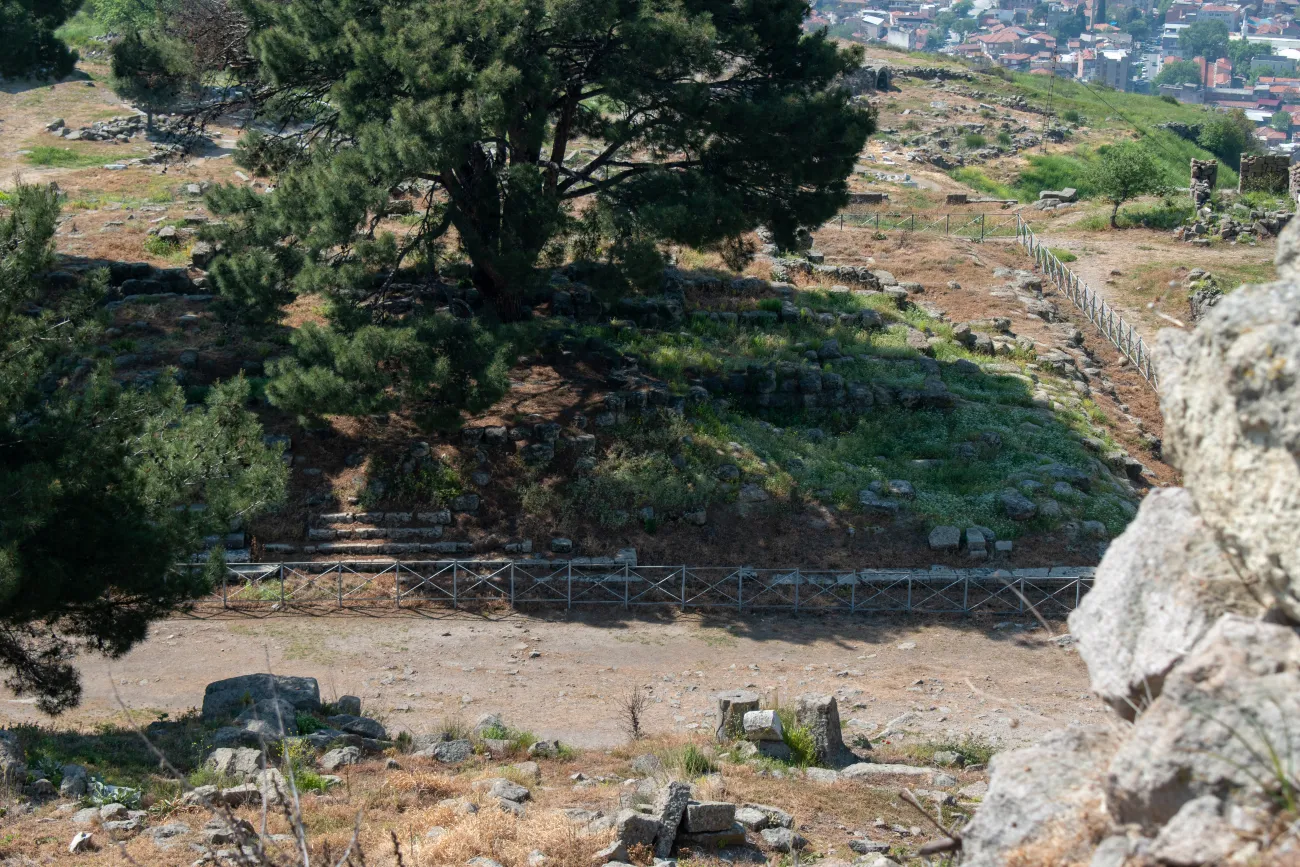Revelation Part 10

Pergamum may have been the seat of Satan, where his throne was. The altar of Zeus looked remarkably like a large throne overlooking a beautiful, productive valley. Could this be where Christ was taken to be tested?
The letter to the Church of Pergamum in Revelation addresses a congregation struggling with worldliness, syncretism, materialism, immorality and idolatry—issues not unlike those found in modern urban centers like New York City. Pergamum was a stunning city built on a hill, with a dramatic acropolis accessible today by chairlift. One of its most notable features was the Altar of Zeus, a massive structure approximately 100 feet wide and 100 feet deep. Many scholars believe this may have been the "throne of Satan" mentioned in Revelation, given its prominence and associations. When German archaeologists discovered it, they were so captivated that the altar was transported to Berlin, where it remains on display in the Pergamon Museum. The altar’s friezes, which depict various Greek gods and goddesses, symbolize the counterfeit spiritual forces at work in the city. The original foundation still sits beneath the acropolis, overlooking a vast valley—perhaps echoing Matthew 4:8, where Satan shows Jesus the kingdoms of the world from a high mountain.

The location of the Altar of Zeus, which may have been the "throne of Satan" mentioned in the book of Revelation.
Pergamum also boasted a magnificent library that rivaled Alexandria's, showcasing humanity’s pride in worldly wisdom. However, 1 Corinthians 2 reminds us that the wisdom of the world is no match for the wisdom of God. The city was also steeped in pagan worship, including the cults of Dionysus and Asclepius. Dionysus, the god of wine and revelry, promoted drunkenness, ecstasy and a release from restraint—celebrated in wild festivals resembling today’s Mardi Gras. Asclepius, the god of healing, was symbolized by a snake (seen today in medical symbols) and was honored through strange rituals that included live snakes roaming healing temples. This was a counterfeit to the serpent in the wilderness in the book of Numbers, which God used as a symbol of healing, but only through His power.
Like Israel in the time of Balaam and the Moabite women (Numbers 25), the believers in Pergamum were being lured into sin by seductive influences. Balaam, unable to curse Israel, taught that placing temptation before them would cause their downfall. This same satanic strategy is exposed in James 1:14, where the anatomy of sin begins with desire and ends in death.
“But each one is tempted when he is drawn away by his own desires and enticed. Then, when desire has conceived, it gives birth to sin; and sin, when it is full-grown, brings forth death” (James 1:14).
God brought judgment on Israel for this compromise, executing 24,000—including their leaders.
The Church in Pergamum also tolerated the doctrine of the Nicolaitans who promoted antinomianism, the false belief that God’s law no longer applies and that spiritual and physical life are separate. Jesus warns the Church to repent and overcome, or He will “fight against them with the sword of [His] mouth” (Revelation 2:16). He reminds them that He is the living Word. Matthew 5:17 affirms that Jesus did not come to abolish the law, and Matthew 4:4 calls us to live by every word from God's mouth.
Despite the rebuke, Christ offers a blessing of a white stone and a new name known only to the one who receives it, to the faithful. This symbolizes victory or a special invitation. As with all the letters, the call is clear, “He who has an ear, let him hear what the Spirit says to the churches.”
UYA Team | uya@ucg.org
United Young Adults (UYA) primarily serves the 18–32-year age group for the United Church of God. There are three main areas of contribution to the lives of the young adults: Promoting Spiritual Growth, Developing Meaningful Relationships and Making the Most of Your Talents. The Know Your Sword series is a daily expository message introducing God’s Word from a trusted perspective.

